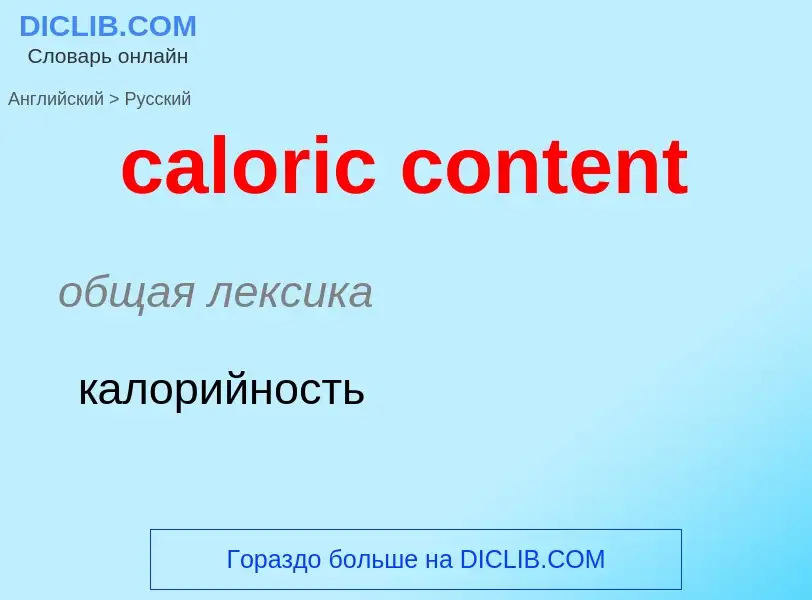Tradução e análise de palavras por inteligência artificial ChatGPT
Nesta página você pode obter uma análise detalhada de uma palavra ou frase, produzida usando a melhor tecnologia de inteligência artificial até o momento:
- como a palavra é usada
- frequência de uso
- é usado com mais frequência na fala oral ou escrita
- opções de tradução de palavras
- exemplos de uso (várias frases com tradução)
- etimologia
caloric content - tradução para russo
общая лексика
калорийность
Definição
Wikipédia
Food energy is chemical energy that animals (including humans) derive from their food to sustain their metabolism, including their muscular activity.
Most animals derive most of their energy from aerobic respiration, namely combining the carbohydrates, fats, and proteins with oxygen from air or dissolved in water. Other smaller components of the diet, such as organic acids, polyols, and ethanol (drinking alcohol) may contribute to the energy input. Some diet components that provide little or no food energy, such as water, minerals, vitamins, cholesterol, and fiber, may still be necessary to health and survival for other reasons. Some organisms have instead anaerobic respiration, which extracts energy from food by reactions that do not require oxygen.
The energy contents of a given mass of food is usually expressed in the metric (SI) unit of energy, the joule (J), and its multiple the kilojoule (kJ); or in the traditional unit of heat energy, the calorie (cal). In nutritional contexts, the latter is often (especially in US) the "large" variant of the unit, also written "Calorie" (with symbol Cal, both with capital "C") or "kilocalorie" (kcal), and equivalent to 4184 J or 4.184 kJ. Thus, for example, fats and ethanol have the greatest amount of food energy per unit mass, 37 and 29 kJ/g (9 and 7 kcal/g), respectively. Proteins and most carbohydrates have about 17 kJ/g (4 kcal/g), though there are differences between different kinds. For example, the values for glucose, sucrose, and starch are 15.57, 16.48 and 17.48 kilojoules per gram (3.72, 3.94 and 4.18 kcal/g) respectively. The differing energy density of foods (fat, alcohols, carbohydrates and proteins) lies mainly in their varying proportions of carbon, hydrogen, and oxygen atoms. Carbohydrates that are not easily absorbed, such as fibre, or lactose in lactose-intolerant individuals, contribute less food energy. Polyols (including sugar alcohols) and organic acids contribute 10 kJ/g (2.4 kcal/g) and 13 kJ/g (3.1 kcal/g) respectively.
The energy contents of a complex dish or meal can be approximated by adding the energy contents of its components.

